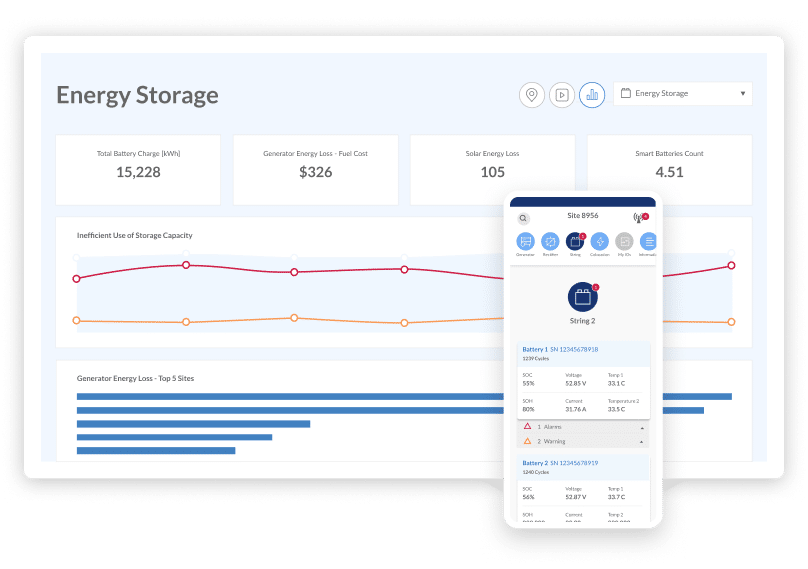Renewables and IOT Energy Storage Monitoring
Actively monitoring energy KPIs to limit outages
About the Product
When faced with unstable power sources and periodic – or even frequent – outages, there is a need to ensure your backup power solutions are ready to kick in at a moment’s notice. This begins with understanding when these energy solutions are being used, and if they are supposed to be active at that time. To achieve this goal, our RMM actively monitors KPIs including availability, use time, voltage, load, state of charge, and state of health, and notifies of any malfunctions, in real-time, so that backup power can be provided, in a flash.


Backup energy assets operate unsupervised

Lack of priority or usage strategy for less-polluting assets

Asset health and performance checks are limited to onsite visits

Durability and life cycle of energy storage assets are often below expectations


Live monitoring of remote backup energy storage assets

Intelligent insights and optimizations to maximize energy storage use and efficiency

Tracking of energy KPIs and asset status from our web or mobile platform

Maximized energy storage infrastructure lifetime and warranty

A Renewed Lease on Energy Consumption

global sunlight = world's annual power demand
renewable's share of global electricity 2020
Ongoing management
All too often, these sustainable energy sources are integrated and forgotten, as if they will automatically operate at peak effectiveness. Yet, to ensure these assets operate properly and provide the optimal effect, they must be monitored and managed, around the clock.
Real-time reporting
To fully leverage the efficiency and carbon footprint improvements these natural energy sources provide, you need consistently stay on top of your usage and the effectiveness of these energy assets. This includes the tracking of KPIs like the time in use, to the amount of power generated, carbon emissions saved, and relative cost savings from renewable energy use.
External factors
Renewable energy sources are highly affected by Mother Nature. As such, external factors, such as weather patterns and the time of year, must consistently be considered. Doing so enables your teams to adapt energy operations, to optimize for efficiency and promote greater operational cost savings.
